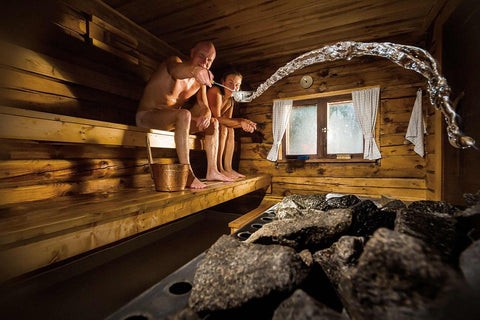The Ultimate Guide To Traditional Sauna
6 Simple Techniques For Traditional Sauna
Table of ContentsThe Basic Principles Of Traditional Sauna Traditional Sauna for BeginnersTraditional Sauna for BeginnersThe 9-Minute Rule for Traditional SaunaA Biased View of Traditional Sauna
The majority of the weight shed in a sauna is water loss and is re-gained upon rehydrating. Nonetheless, without a doubt sauna can be a fundamental part of a healthy weight-loss program. To look at the differences between traditional and IR saunas, I will separate these right into verifiable, theoretical, and produced differences.Thus, the best point in the saunawhich is at the ceiling directly over the sauna heateris normally in between 185 and 190 F. Claims that a typical sauna surpasses 200 F is simply not real and not applicable for electrical saunas offered in the United States. The temperature for a far-infrared sauna is normally established in between 120 and 140 F; however, unlike the conventional sauna, the goal in and IR area is not to achieve a heat.
Due to this, the temperature difference is virtually irrelevant, given that extreme sweating results in both sauna types, however the technique of heating the body is various. In an IR sauna the bather will certainly really feel warm and will certainly sweat profusely, yet at a lot reduced temperatures (Traditional Sauna). Thus, if the goal is to spend longer time periods in the sauna, the IR sauna is an excellent option
When a traditional sauna has been effectively warmed, the sauna wall surfaces are cozy, the air temperature level has attained established temperature and the rocks are extremely heated. As a fascinating side note, the warmed walls and the rocks are giving off far-infrared warmth, integrated with the warmed air, to produce an "covering warm".
Our Traditional Sauna Statements

When the high temperature level is attained, the elements cycle on and off to preserve the heat. Many typical sauna users take pleasure in pouring water over the rocks to create vapor to increase sauna humidity degrees. The advantages of putting water over the rocks include: making the area a lot more comfy, moistening the nasal flows, and permitting the use of aromatherapy by mixing essential oils with the water.

When the energy gets in the body, it triggers the body temperature to boost and ultimately results in sweat. In an infrared sauna it is essential for the emitters/heaters to stay on practically constantly. Given that there is no mass of rocks to retain heat, the sauna will cool down if the emitters turned off.
As stated above, the sauna bather in an infrared room desires to position himself in front of running emitters to get maximum benefit from the warmth. The home heating time for the 2 spaces can be very different, depending upon exactly how the rooms are used. For a typical sauna, a bather must enable 30-40 minutes for the area to accomplish a wanted temperature and to appropriately pre-heat the rocks.
The Only Guide to Traditional Sauna
A well constructed sauna will typically accomplish a temperature level of 150-160 F in regarding 30-40 mins. For hotter temperature levels, the room may require to heat site link for a longer duration.

Typical saunas tend to be larger (therefore utilize even more electrical energy) than infrared saunas, although typical saunas are definitely offered in one and 2 person sizes. For a two-person conventional sauna, 5x6 or 5x7 dimension is most popular. The leading bench can easily seat two or 3 people and is likewise enough time to rest during the sauna session.
Everything about Traditional Sauna
The ordinary price per kWH of power in the united state is approximately $0.11, so a 4.5 kW heating unit will certainly set you back roughly $.50 to compete one hour, if the heater runs continually for one hour. Generally a sauna heating system will run for 75% of the first hour and 50% of subsequent hours on considering that the aspects cycle once the established temperature is accomplished.

There is a hardly ever reviewed difference in the social experience in between the two rooms. While our society has lost a few of the social benefit of the standard sauna experience, it can be extremely socially fulfilling (Traditional Sauna). From family time in the sauna, to heart-felt conversations with better halves, to sauna partiesthe standard sauna experience can bring about intimate socializing
The Definitive Guide for Traditional Sauna
Most higher end infrared rooms include colored light therapy, audio systems and full-glass fronts.